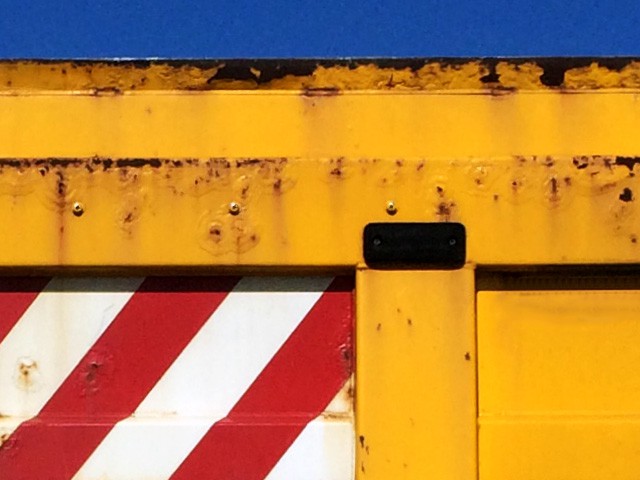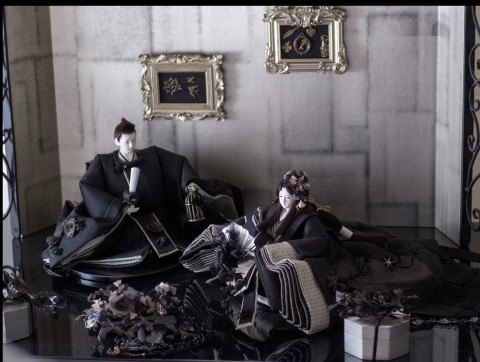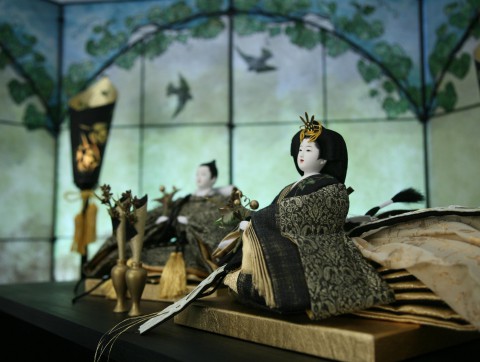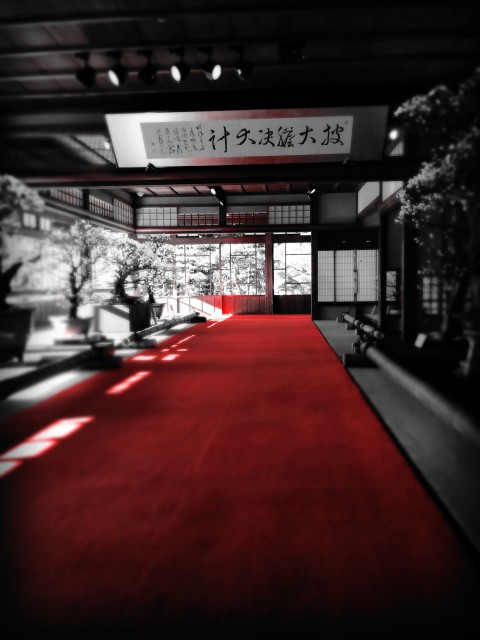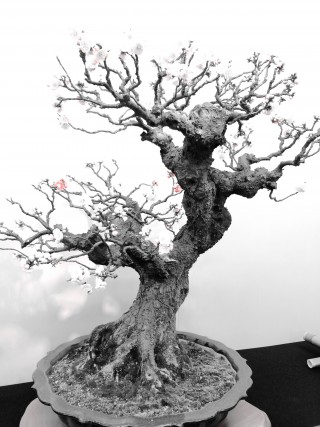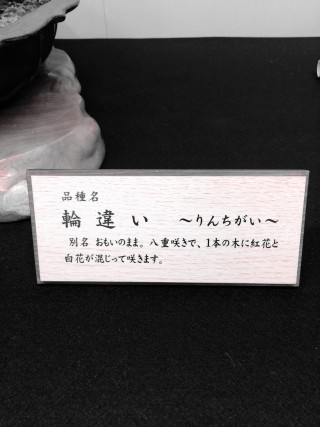
When I visited Kyoto the other day,
I noticed some incredibly detailed ornaments on the rooves of temples.
At the Fukushoji Temple, there is a "Shishi" (Lion) on each corner of the roof.
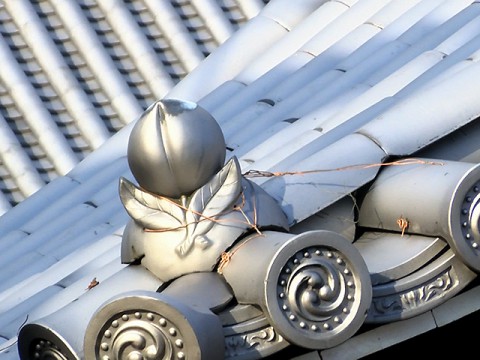
At another temple, there is a peach-shaped ornament on its roof.
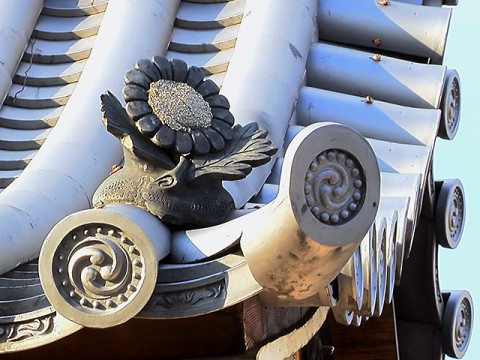
Is this a sunflower?
Every temple has a semi-circle of tiles in each corner of its roof,
with an ornament nestled in its center.
The ornament is usually a lion, peach, or sunflower.
The tiles, known as "Tomebuta",
were originally put on the roof for protection against fire-disasters.
The ornaments were later added to the design to ward against evil spirits.
I wondered why I had never paid attention to them until now.
In Kyoto, there are so many temples located close to each other in small areas,
we can see them very closely.
Walking down alleys in Kyoto, Tomebuta keeps appearing from both sidewalks,
and so I couldn't help but notice them.
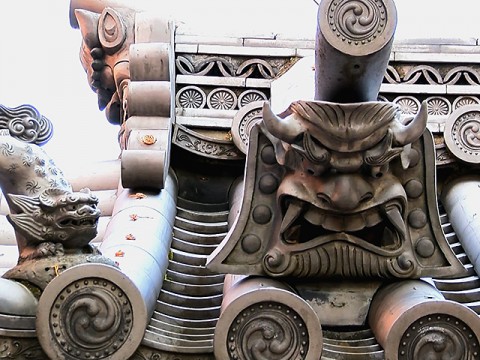
Tomebuta and Onigawara (oni means demon and kawara means tile in Japanese) deisigned roof ridge tiles are a powerful set, warning off enemies.
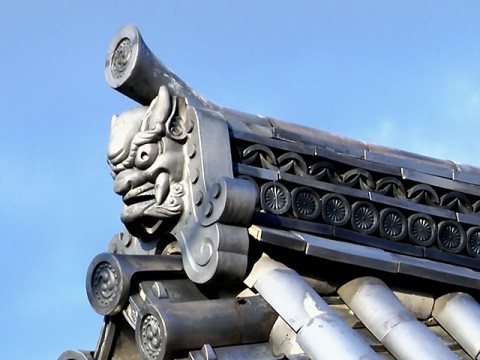
Each Onigawara has different facial expressions and/or shape. When you look at other roof ridge tiles carefully, you can see they are elaborately designed.
I'm going to get hooked on taking pictures of all the different designs!
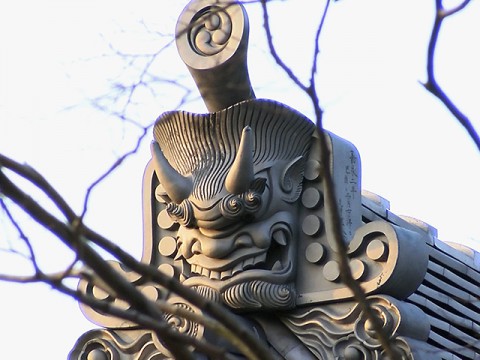
At the Zuishunin Temple which Mr. Minakami Tsutomu, a writer from Fukui had a special connection with, the number, “1849” is inscribed on its Onigawara.
This Onigawara is about 170 years old, but the shape of it looks modern to me.
The person who makes Onigawra is called “Onishi”
(Oni means demon and Shi means a master in Japanese).
There is an Onishi living in Fukui, whose name is Kitagawa.
T.S




